What is Ebi Furai?
Ebi Fry or Ebi Furai (エビフライ) is an iconic Japanese deep-fried dish made with large shrimp coated in flour, egg, and panko breadcrumbs. This dish is often paired with Japanese-style tartar sauce.
In Japanese, “Ebi (エビ)” means shrimp, and “Furai (フライ)” is the Japanese pronunciation of “fry” referring to fried food. When combined, the literal translation becomes simply deep-fried shrimp.
The dish is believed to have been created at Renga Tei, a long-established Western-style restaurant in Ginza, Tokyo, and some theories suggest that it was created as a variation of tonkatsu (deep-fried pork cutlet) or menchi katsu (deep-fried mince meat).
When preparing Ebi Furai at home, black tiger or king prawns are commonly used. In the case of Ebi Fry, bigger prawns are typically better.
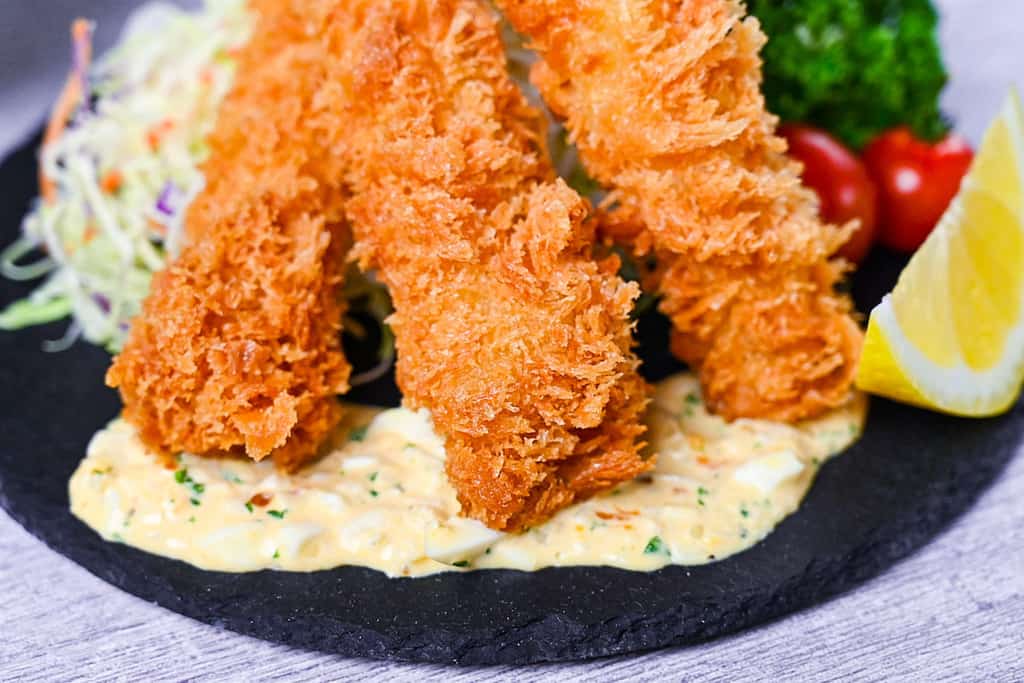

How I Developed This Recipe
I tried to recreate the classic Ebi Furai dish, which you’d typically find on a teishoku (set meal) menu. The secret to this dish is in how you prepare the shrimp.
You want to make sure they’re perfectly breaded and fried to get that ideal combination of crispy and succulent. The breading should be light but flavorful, which really brings out the flavor of the tender shrimp inside.
I paired the Ebi Furai with a homemade Japanese-style tartar sauce to complement it. This sauce adds a creamy, tangy element to the dish, making it even more flavorful without overpowering the shrimp’s natural taste.
Ingredients & Substitution Ideas
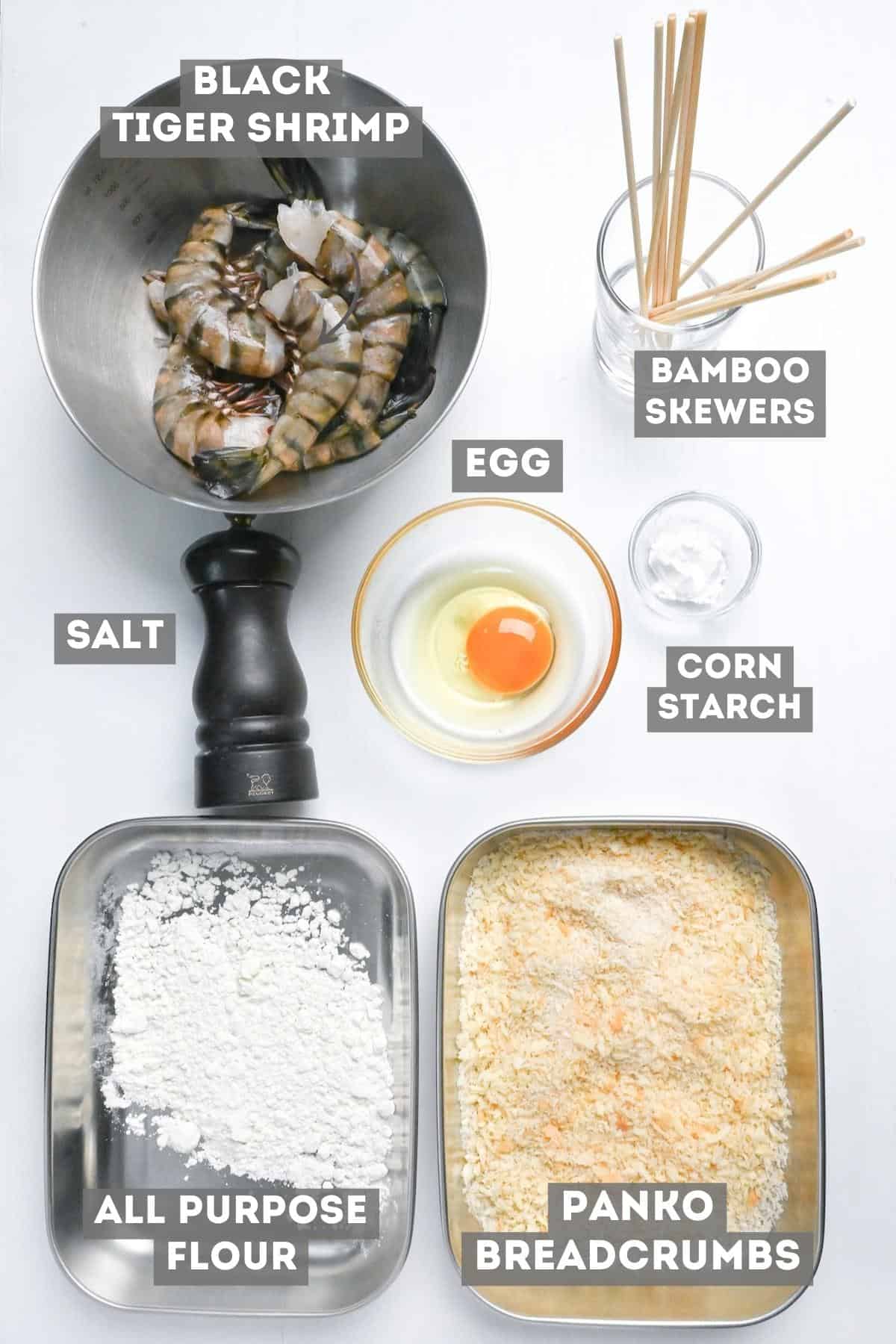
- Shrimp: In Japan, black tiger or king prawns are commonly used.
- Bamboo skewers (optional): Make sure the skewers are longer than the shrimp.
- Cleaning agents: We use salt and cornstarch for effective shrimp cleaning.
- Coating: Sequentially coat the shrimp in flour, egg, and panko breadcrumbs in preparation for frying.
- Cooking oil: Opt for neutral oils with high smoke points, such as canola, sunflower, or peanut oil. My personal recommendation is rice bran oil.
- Homemade tartar sauce ingredients: This sauce is crafted using finely diced yellow onion, hard-boiled egg, Japanese mayonnaise, lemon juice, sugar, salt & pepper, and a touch of parsley.
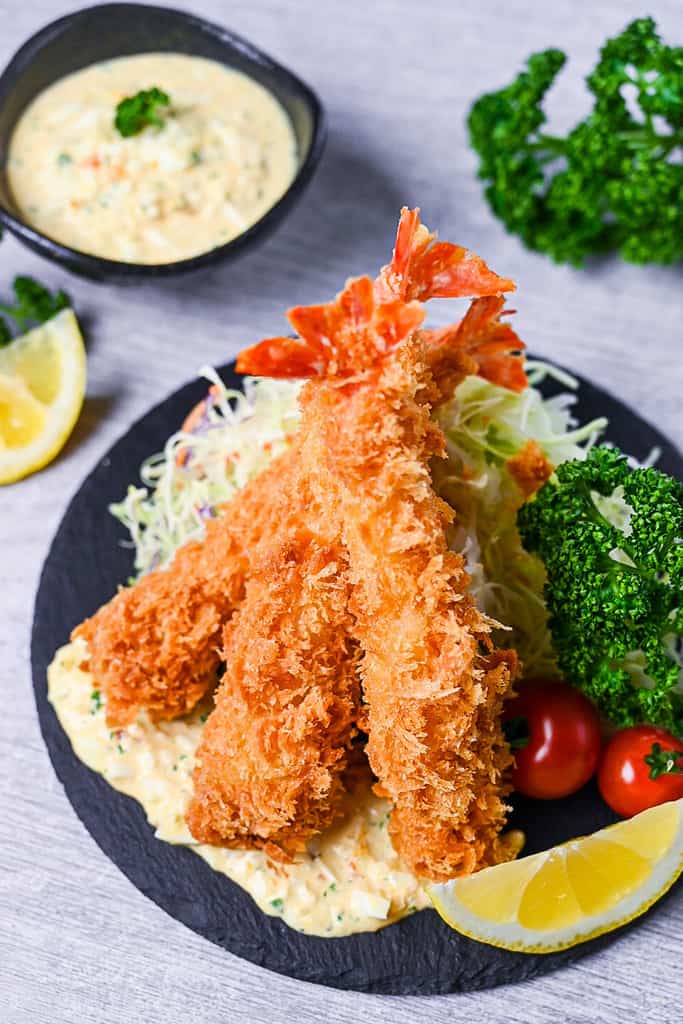
Visual Walkthrough & Tips
Here are my step-by-step instructions for how to make Japanese Ebi Furai at home. For ingredient quantities and simplified instructions, scroll down for the Printable Recipe Card below.
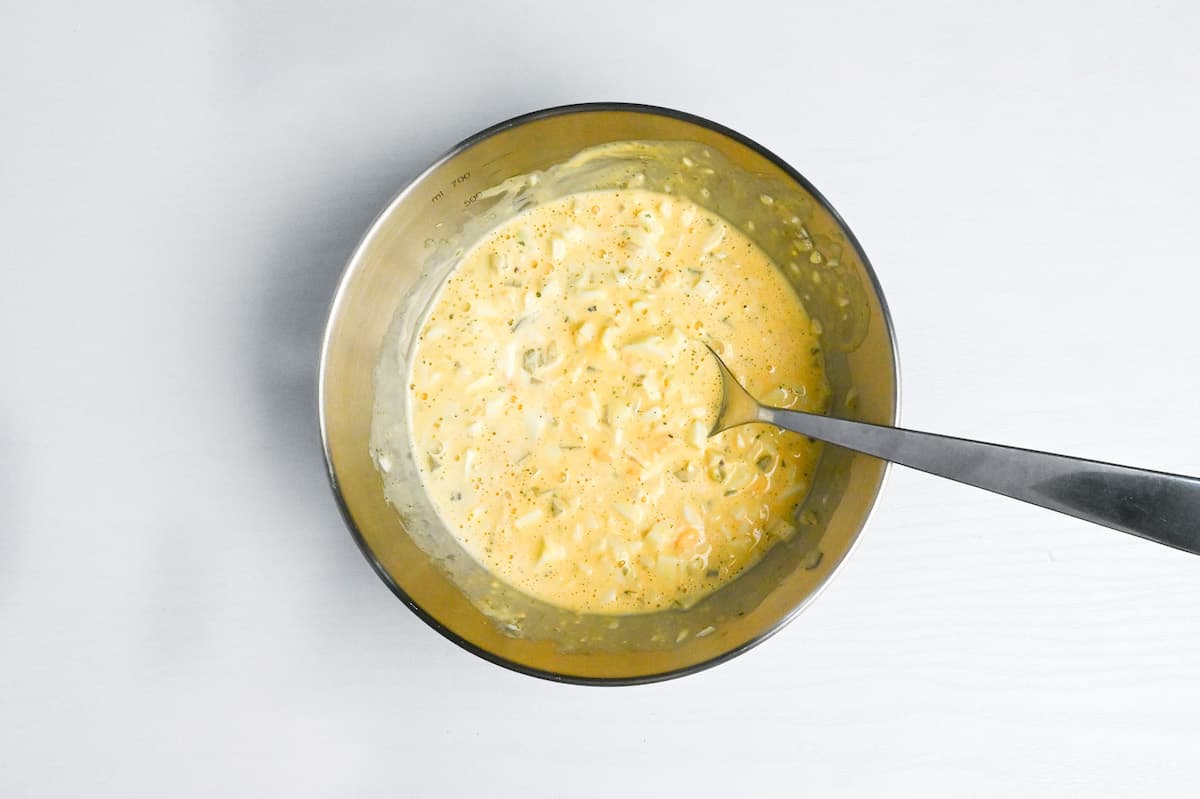
Cut the boiled eggs into halves, scoop out the yolks, and place them in a mixing bowl. Mash them up and add Japanese mayonnaise, lemon juice, sugar, parsley, and a pinch of salt and pepper.
Mix until well combined, then add finely diced onion and egg whites. Cover and store in the refrigerator until serving time.
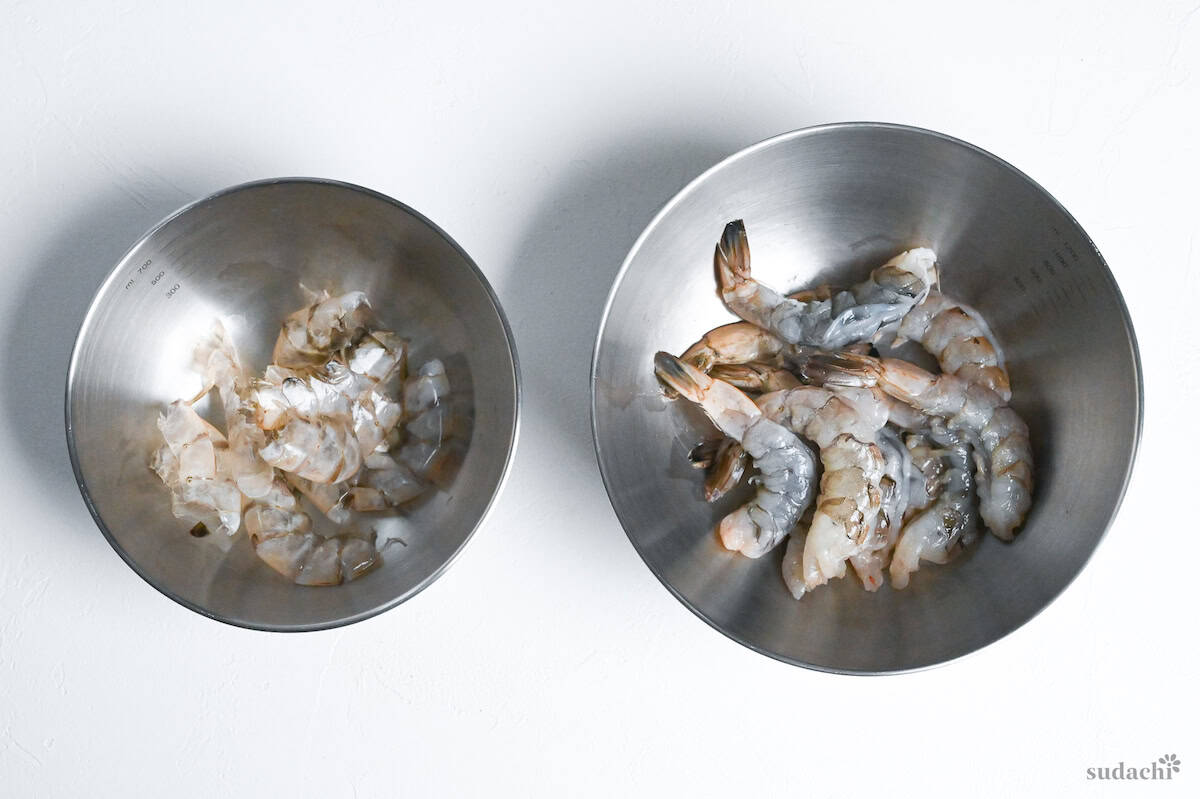
Remove the shells by splitting the shell in the middle of the legs and pulling it clean off. For presentation purposes, we usually leave the tail on.
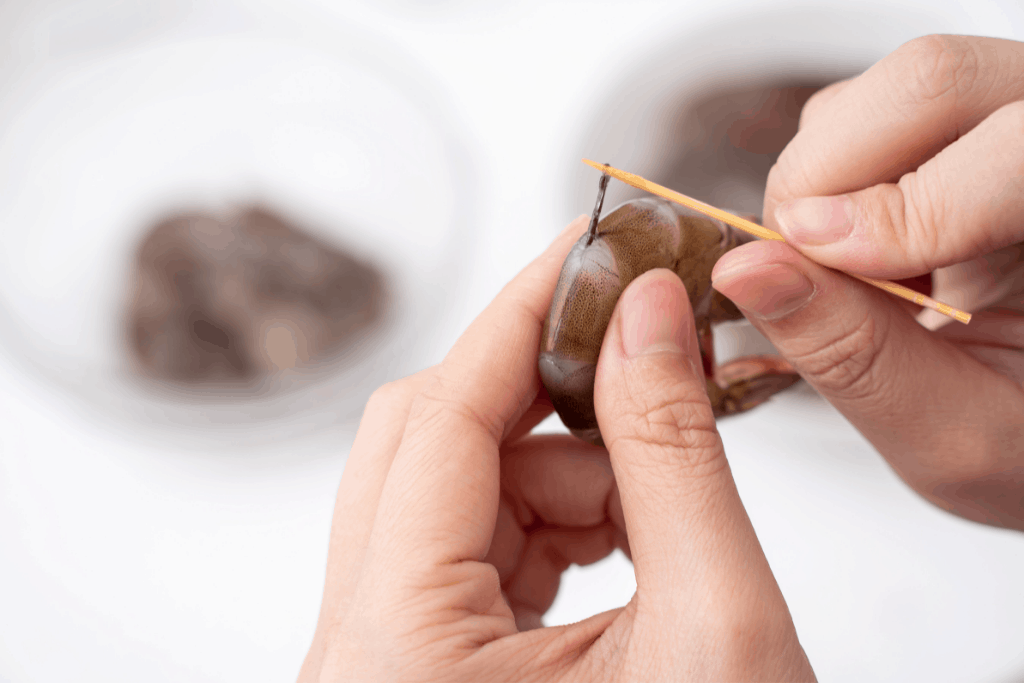
For deveining, cut down the back of the shrimp to reveal the vein. You can pull it out using the tip of the knife, a toothpick or something similar.
If you don’t want to cut it, you can use a toothpick to pull it out from the top. (Although sometimes it snaps if you do this so be gentle.)
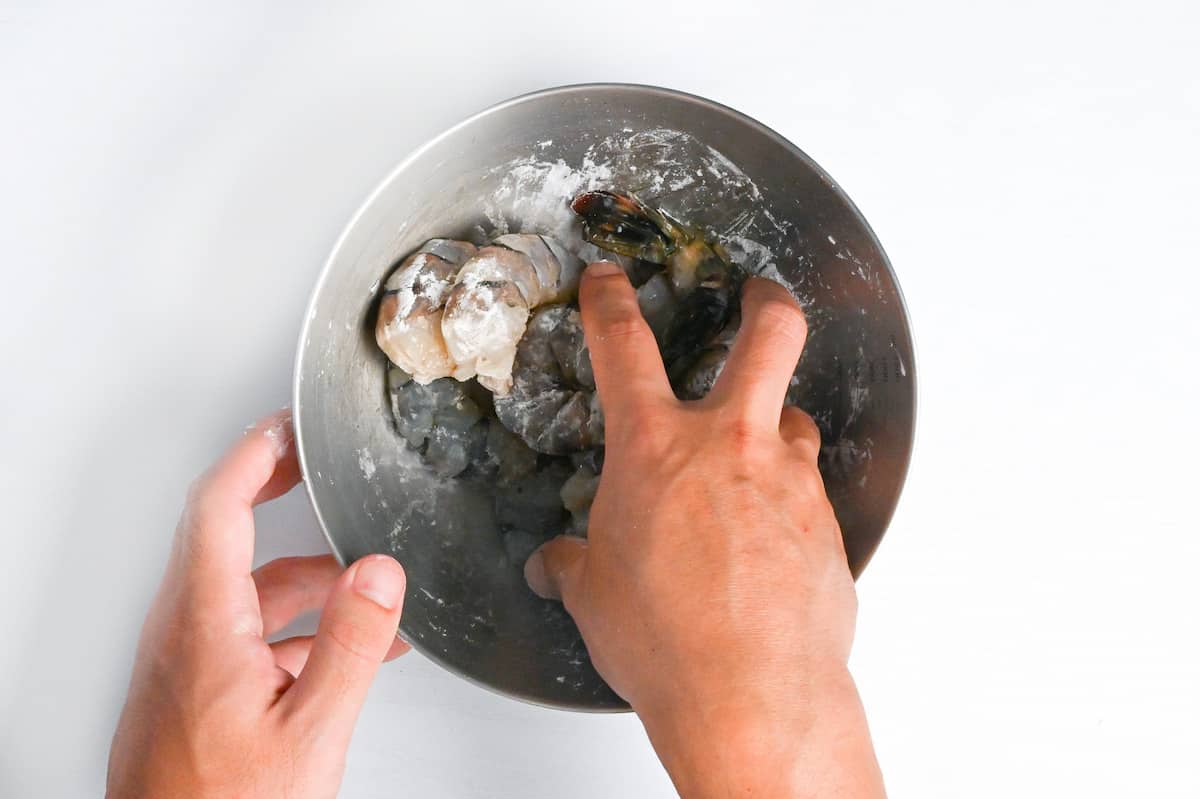
Place the shrimps in a bowl and rub the surface with salt and cornstarch. Salt dehydrates the shrimp which improves the texture and starch absorbs the dirt, this step will ensure your shrimp will be delicious!
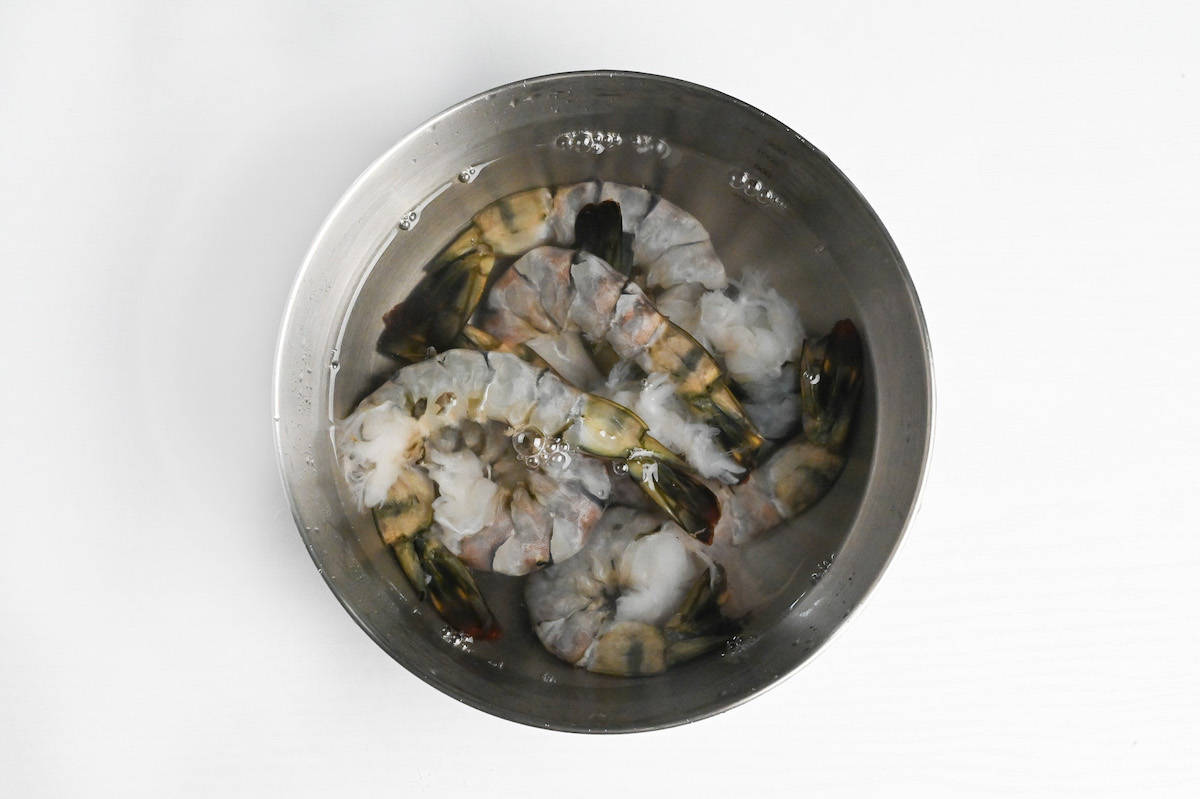
After a few minutes, wash the shrimps thoroughly in clean water.
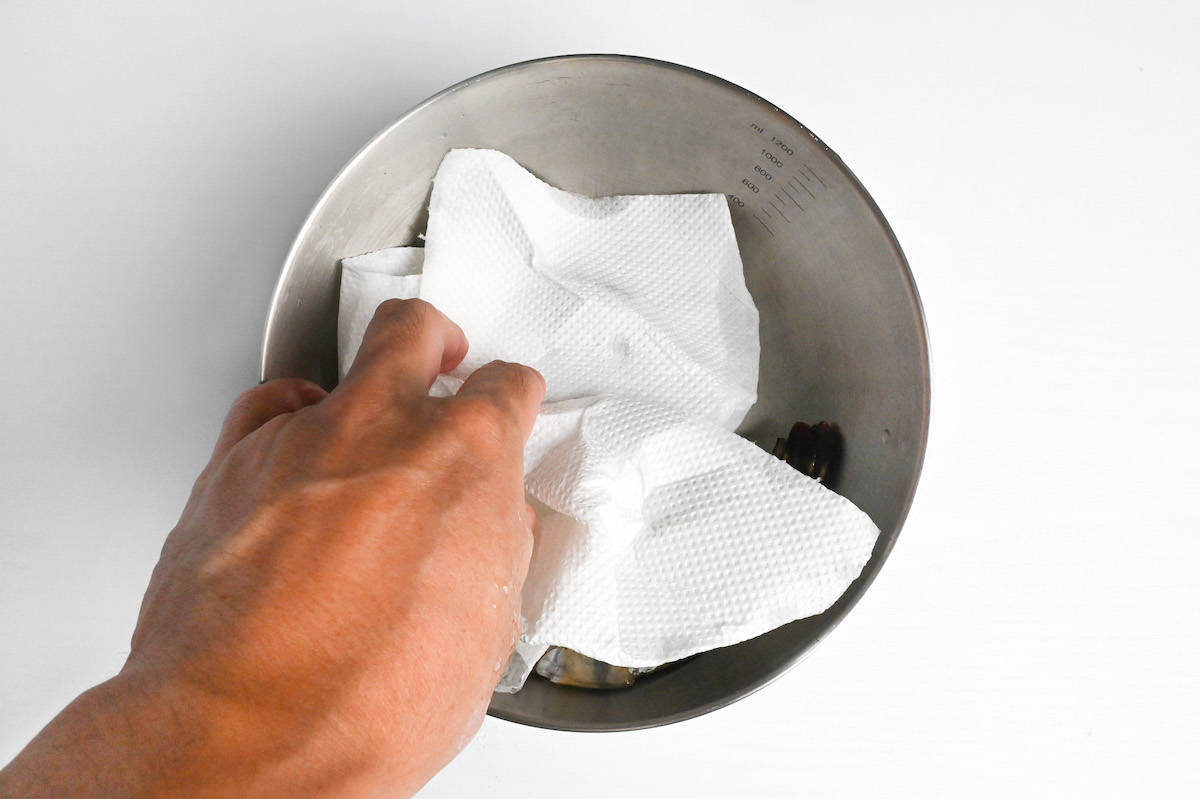
Drain the water and dry the surface with kitchen paper.
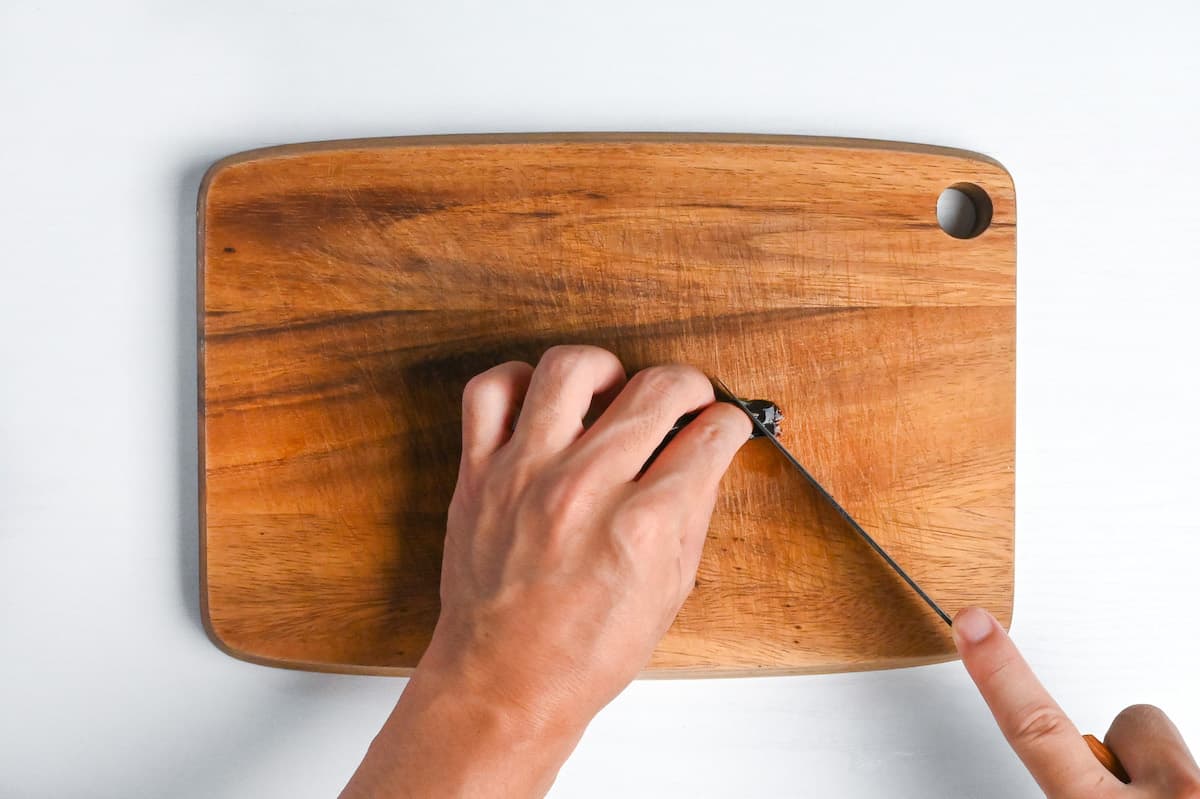
There are 3 tails on a shrimp, two fins on the sides, and a pointy one in the middle.
Place the shrimp on its side and trim it diagonally, with the tail folded in half. This step is not only decorative but also prevents oil from splattering out when frying.
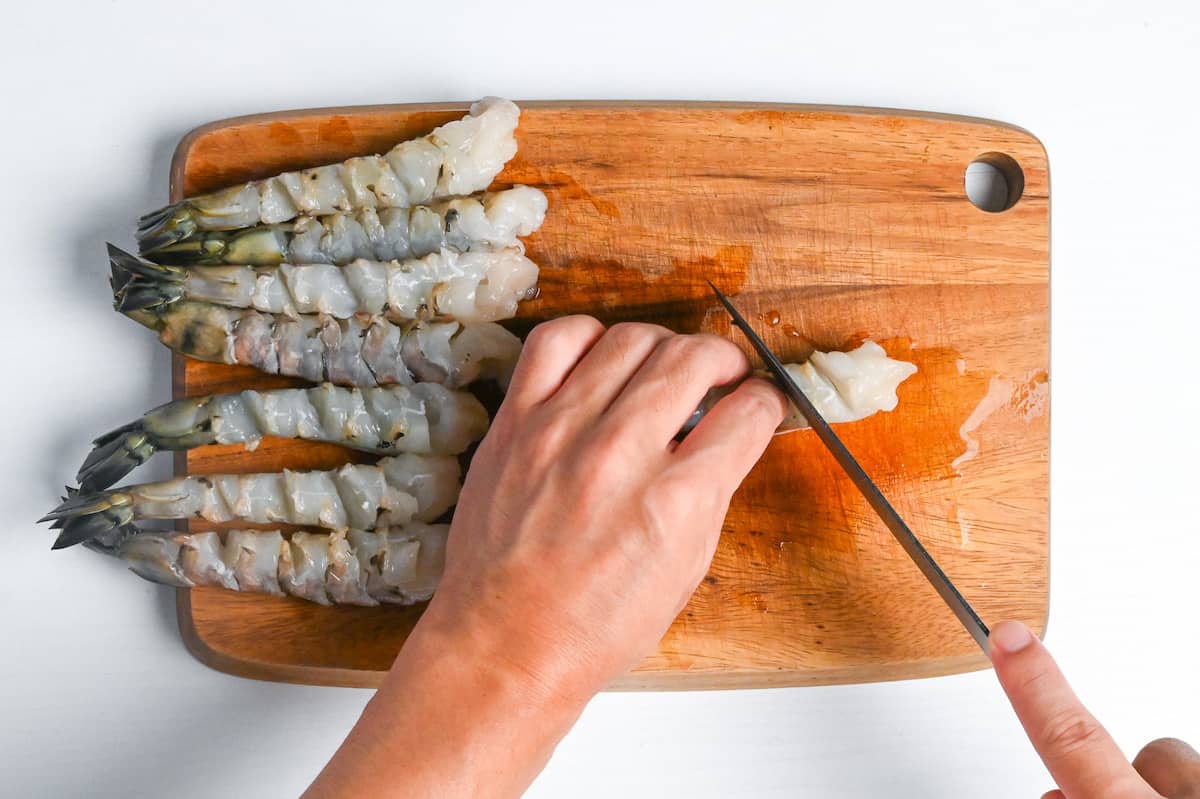
Turn the shrimp so the belly is facing up and make shallow incisions diagonally all the way along the body. Gently press the back of the shrimp to stretch the muscle. These steps will help keep them straight during cooking.
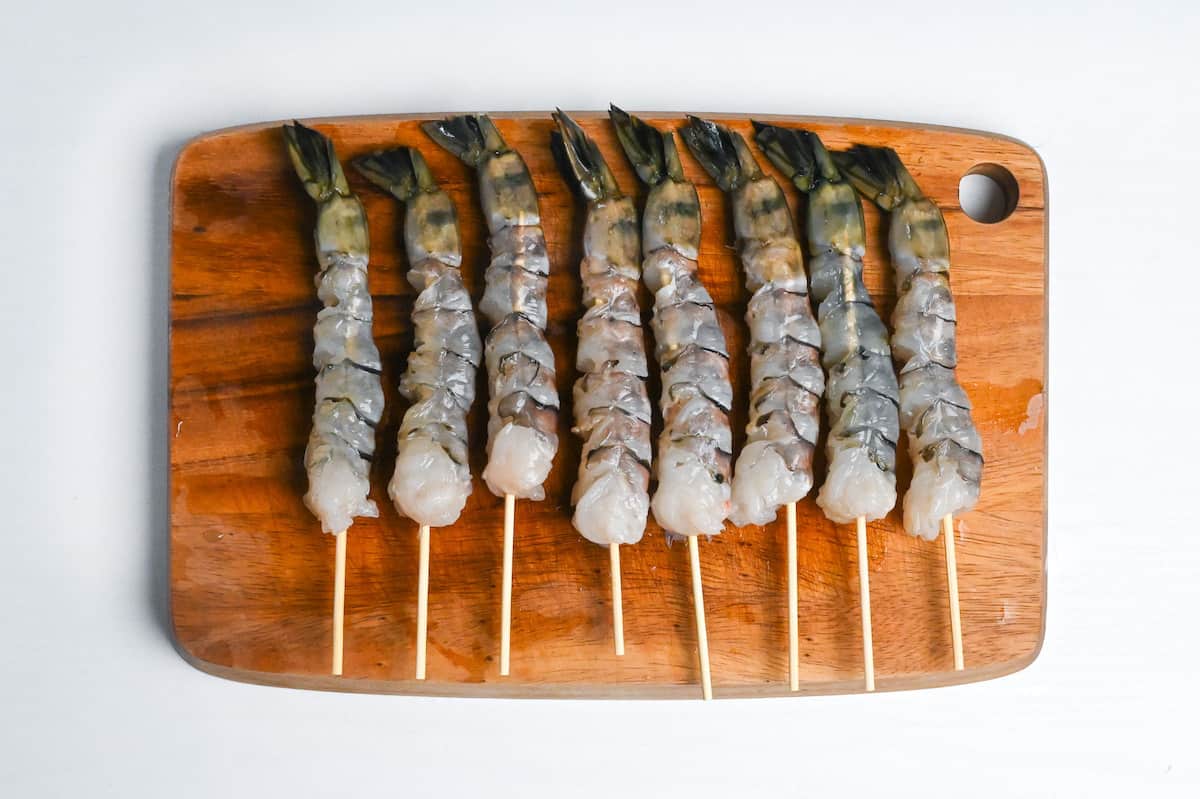
An optional additional step to help prevent curling is pushing a long bamboo skewer through the shrimp. I recommend soaking the skewers in water or lightly coating them in oil to make them easier to remove after frying.
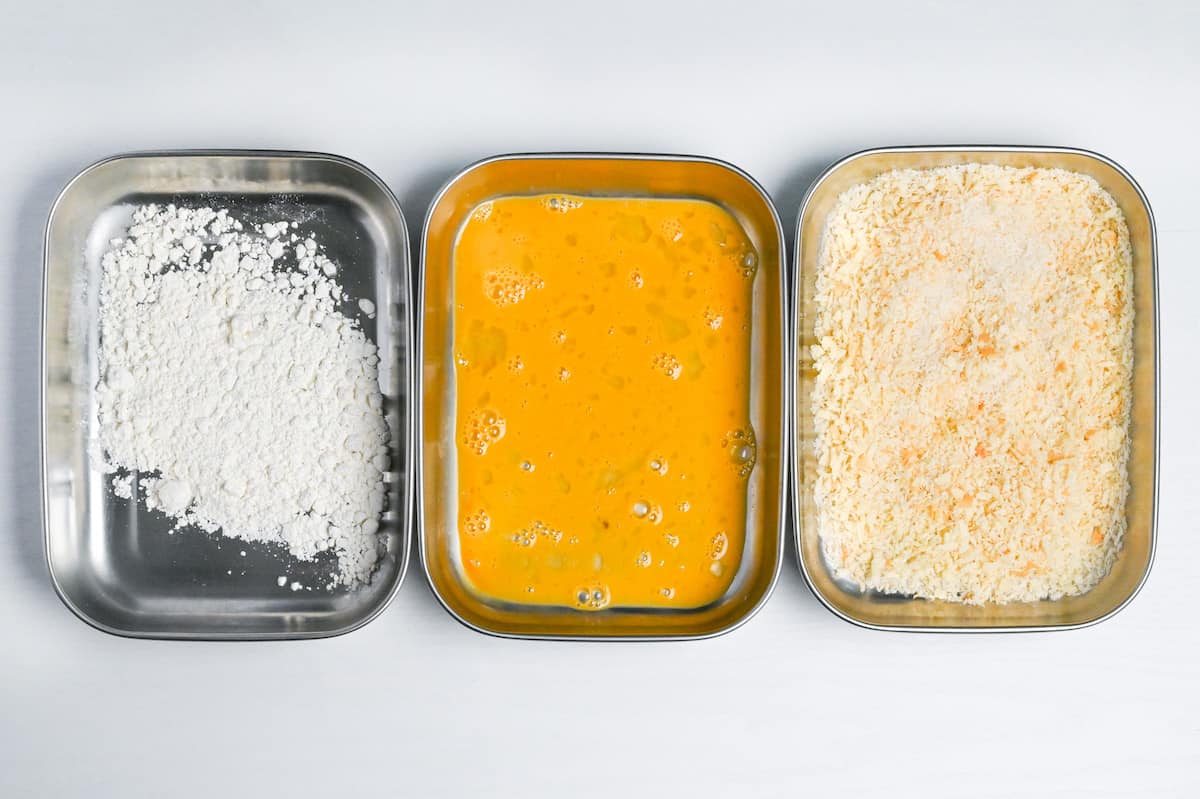
Prepare a coating station with three containers: one with flour, one with whisked egg, and one with panko breadcrumbs.
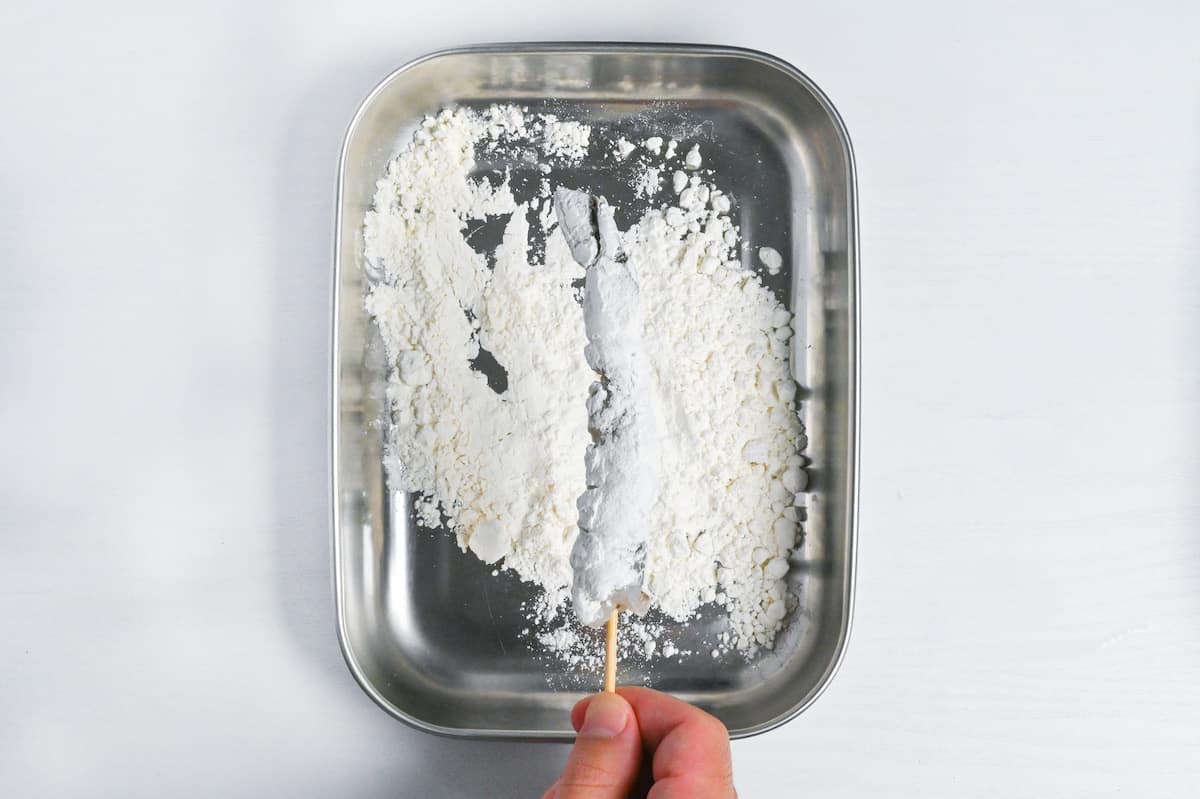
Coat with flour first and brush off the excess.
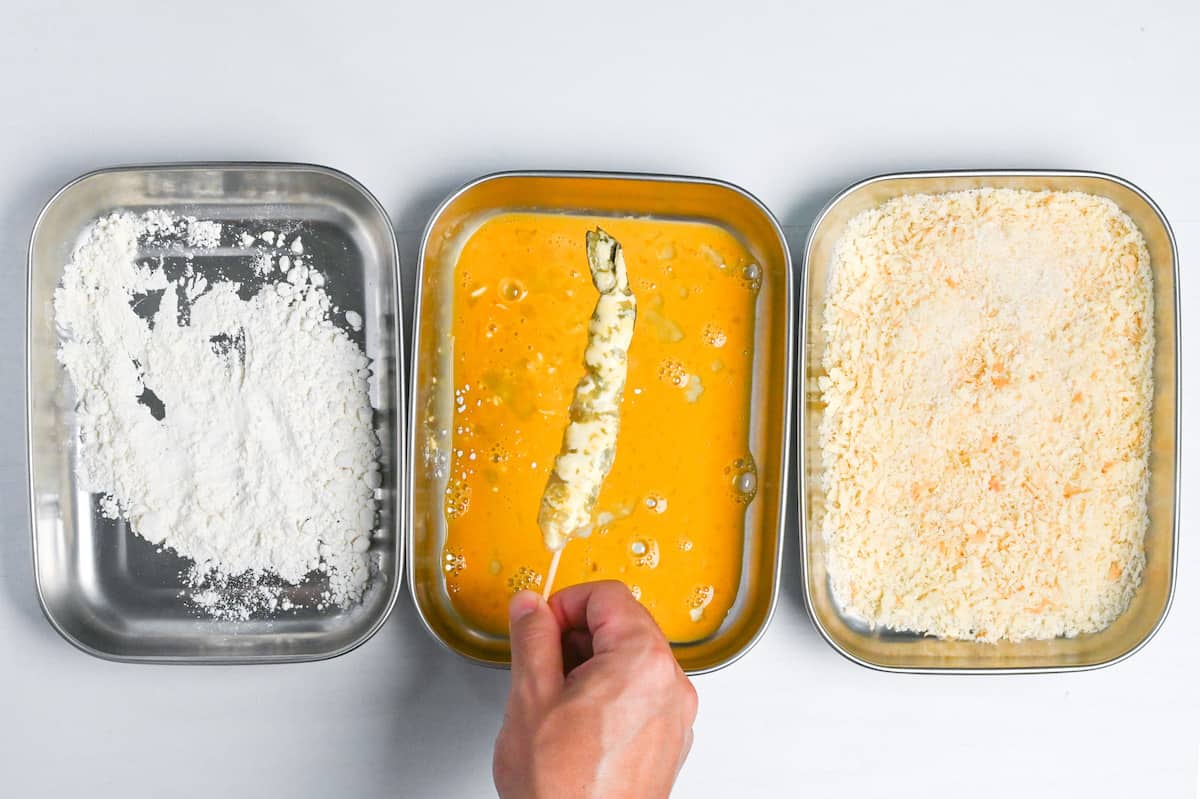
Coat with egg and then roll in the panko breadcrumbs. If there are any gaps, coat an extra layer of egg and panko to ensure they are fully covered.
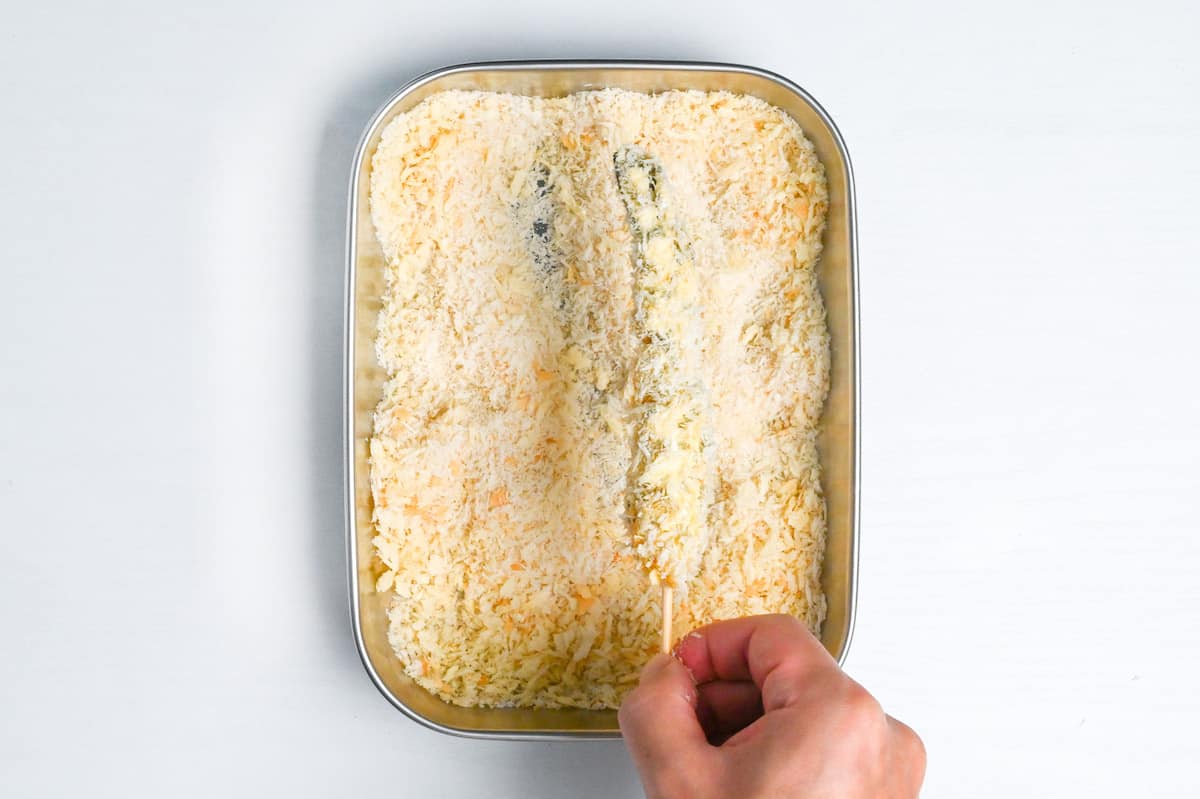
Repeat until your shrimp are fully coated, and preheat your oil to 190°C (374°F).
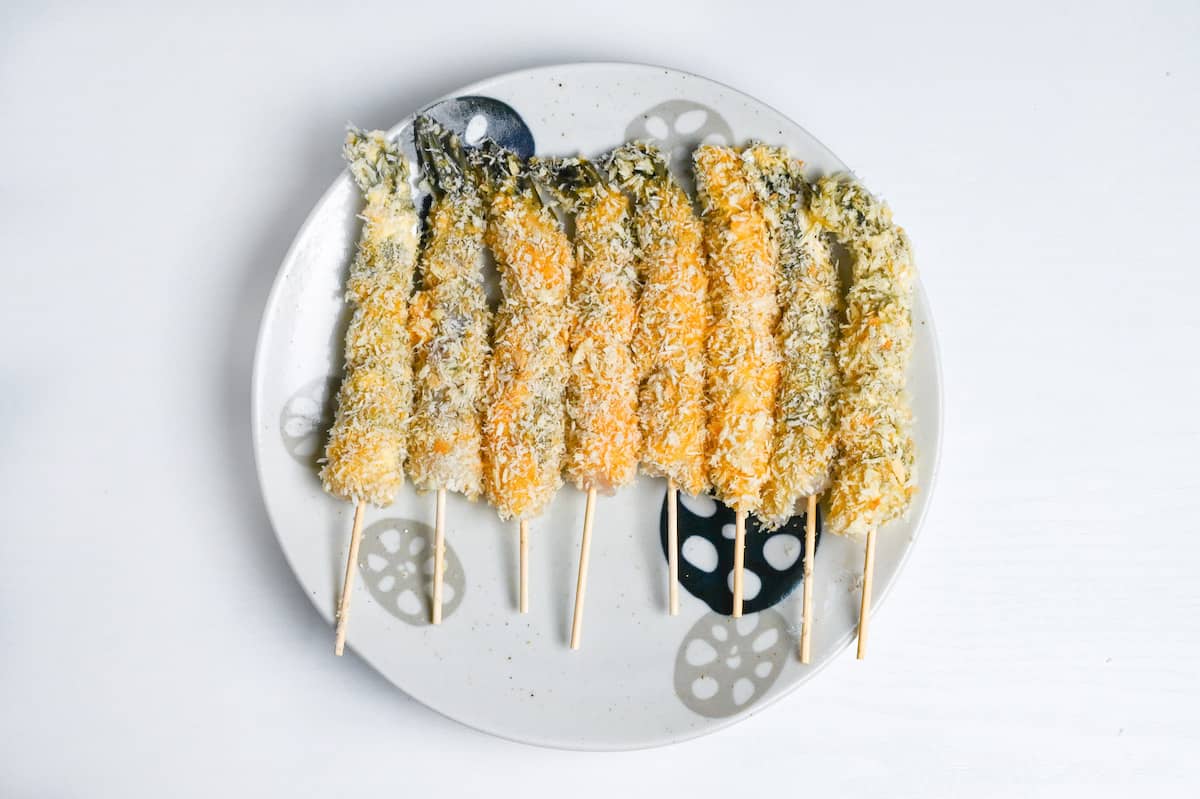
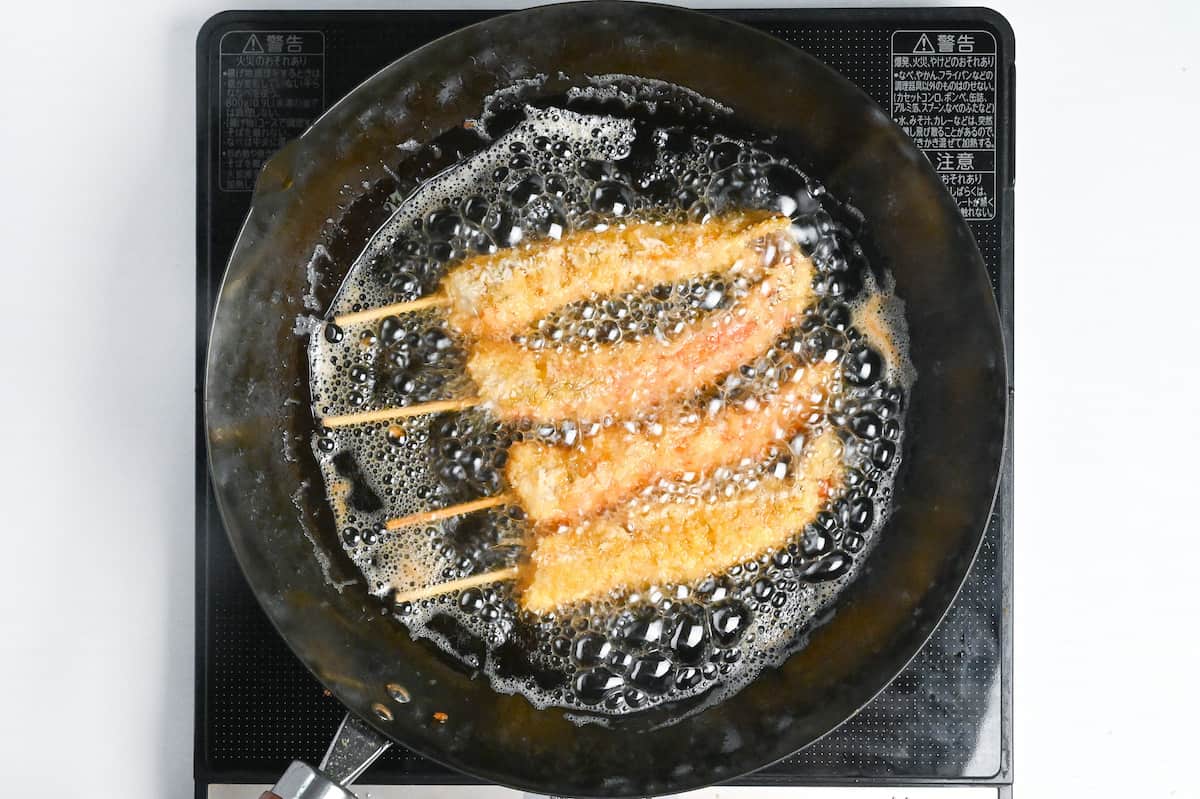
Once the oil has finished heating, add the Ebi Furai and make sure not to overcrowd the pan. When you first add them, the oil will bubble and crackle loudly. This is the reaction between the hot oil and the moisture in the shrimp.
Don’t touch them for the first minute (this is to prevent the panko from falling off), then turn occasionally to ensure they’re evenly cooked. Fry until the bubbles quiet down and the panko is golden all over.
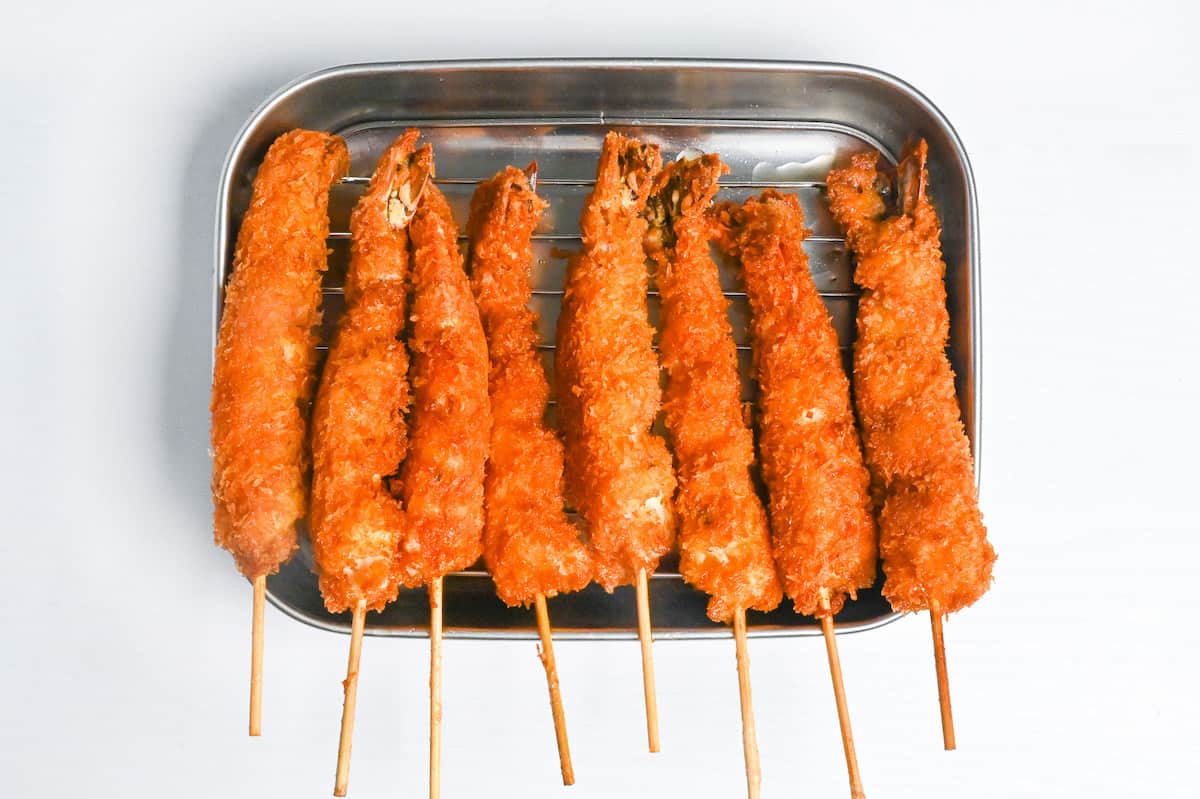
Place on a wire rack to drain any excess oil and leave to cool for a few minutes. Once the stick is cool to touch, hold the Ebi Furai with tongs and carefully pull out the skewers.
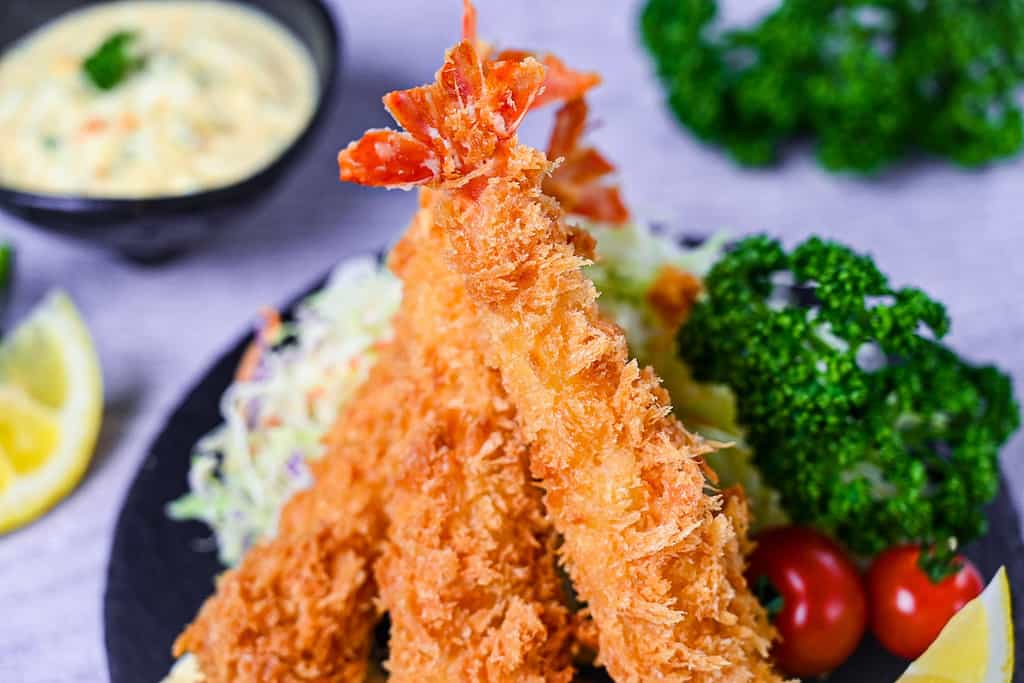
How to Store
To store Ebi Furai short-term, wrap each individually and refrigerate for up to two days. For longer storage, follow the same wrapping method and freeze for up to one month.
Remember, while freezing extends freshness, the quality will decline over time.
Panko-coated shrimps can also be frozen raw (pre-fried state) in sealed containers for convenient future cooking. It is not recommended to thaw uncooked Ebi Furai as it can make the panko soggy. Instead, you should deep fry from frozen and increase the frying time to ensure they are cooked all the way through.
Storage summary
Room temperature – Not recommended.
Refrigerated – Up to 2 days.
Frozen – Up to a month.
FAQ
Ebi fry and shrimp tempura are both deep-fried shrimp dishes, but they differ in coating and presentation. Ebi fry uses panko breadcrumbs for a thick, golden crust and is typically paired with tartar sauce. Tempura shrimp has a light, airy batter, resulting in a pale and crispy exterior. It’s often served with salt or a dashi-based “tentsuyu” sauce.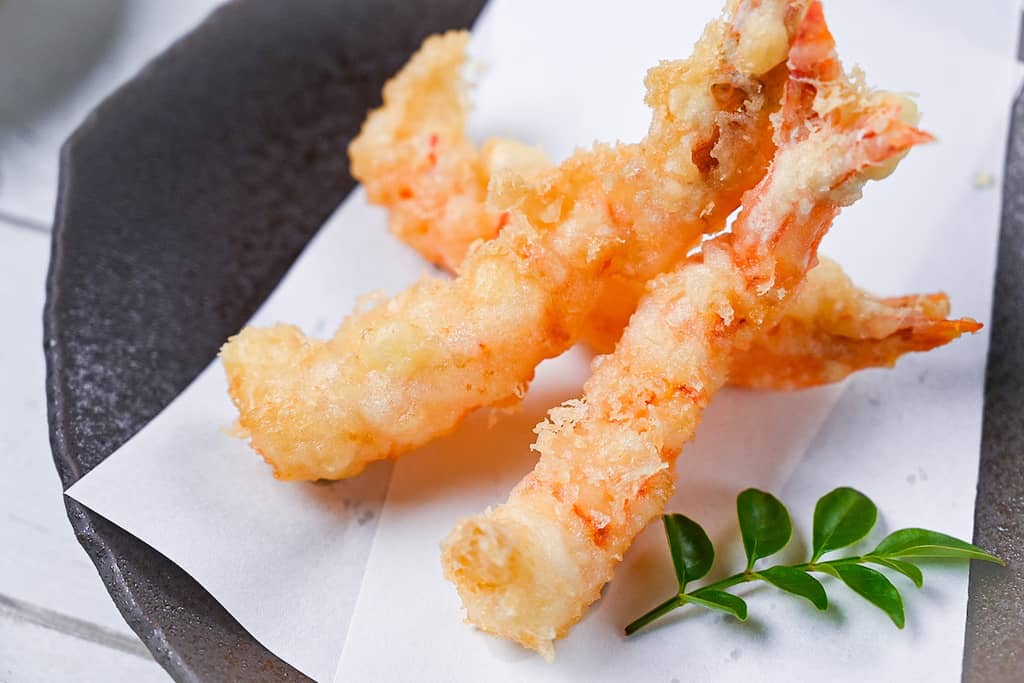
Nagoya’s ebi fry is a popular dish, but contrary to popular belief, it’s not from Nagoya. The actual origin is Renga Tei, a long-established Western-style restaurant in Ginza, Tokyo. The misconception began when Nagoya residents supposedly called it “Ebi Fryaaa” on national TV. This led to the assumption that it’s a Nagoya dialect and that the dish originated there. Capitalizing on this myth, many Nagoya restaurants began offering giant ebi fry alongside local favorites like hatcho miso sauce and kishimen. However, it’s worth noting that locals don’t actually refer to it as “えびふりゃー.”

I hope you enjoy this Japanese Ebi Furai recipe! If you try it out, I’d really appreciate it if you could spare a moment to let me know what you thought by giving a review and star rating in the comments below. It’s also helpful to share any adjustments you made to the recipe with our other readers. Thank you!
More Japanese Shrimp Recipes
- Ebi Chili (Shrimp in Chili Sauce)
- Shrimp Yaki Udon (Shio Lemon Shrimp Udon Stir Fry)
- Crispy Japanese Shrimp Tempura (Ebiten)
- Ebi Mayo (Fried Shrimp in Mayonnaise Sauce)
Want more inspiration? Explore my Shrimp Recipe Roundup Post for a carefully selected collection of tasty recipe ideas to spark your next meal!
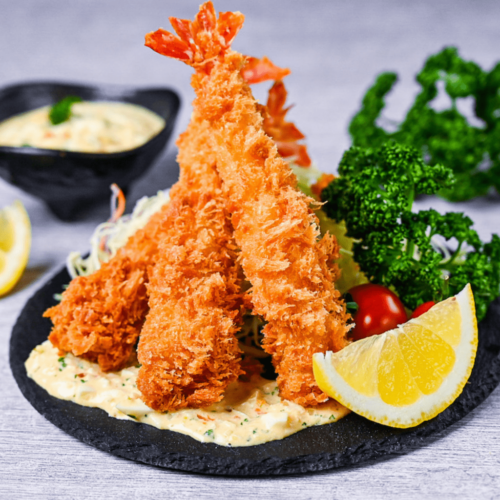
Ebi Furai (Japanese Deep-fried Shrimp with Panko)
Equipment
- Japanese-style fryer
- Stainless steel cooking tray with wire rack
Ingredients
Tartar Sauce
- 25 g onion finely diced
- 2 hard-boiled egg
- 4 tbsp Japanese mayonnaise I use Kewpie Mayonnaise
- 1 tbsp lemon juice
- 2 tsp sugar
- 1 pinch salt and pepper
- 1 pinch fresh parsley
Ebi Fry
- 6 black tiger shrimp or similar large prawn
- 6 bamboo skewers longer than the prawns
- 2 pinches salt
- 1 tsp cornstarch
- 1 egg
- 30 g all-purpose flour
- 50 g panko breadcrumbs
- cooking oil for deep frying
My recommended brands of ingredients and seasonings can be found in my Japanese pantry guide.
Can’t find certain Japanese ingredients? See my substitution guide here.
Instructions
Tartar Sauce
- Cut 2 hard-boiled egg into halves and scoop the yolks out into a medium sized bowl. Mash them and add 4 tbsp Japanese mayonnaise, 1 tbsp lemon juice, 2 tsp sugar, 1 pinch fresh parsley and 1 pinch salt and pepper. Mix well, finely dice the egg whites and 25 g onionand mix once more. Store in the fridge until serving.

Prepping the Prawns
- De-shell 6 black tiger shrimp and leave the tails intact. Place them in a bowl and rub the surface with 2 pinches salt and 1 tsp cornstarch.

- After a few minutes, wash the prawns in fresh water to rinse off the salt and corn starch.

- Drain the water and dry them with kitchen paper.

- Place the shrimp on a chopping board their sides with the tail folded in half and trim it diagonally. The pointy tip should be cut off and be the shorter part of the diagonal.

- Turn the prawn so the belly is facing up and make diagonal incisions along the whole body. The incisions should be about 1cm apart and go about 1/2 way through the prawn.

- Optional step: Push bamboo skewers through the prawns to ensure they stay straight during cooking. Soak the bamboo skewers or coat with a thin layer of oil to make removal easier later.

Breading and Cooking
- Heat up your cooking oil to 190 °C (374 °F).
- Start heating your oil to 190 °C (374 °F). While you wait, arrange a dish of 30 g all-purpose flour, a dish 1 egg (whisked) and one with 50 g panko breadcrumbs.

- Coat the prawn with flour and brush off the excess.

- Next, roll in the whisked egg until fully covered.

- Roll the prawn in the panko breadcrumbs until well covered. Press the panko down firmly to stop it from falling off.

- Repeat until all of your prawns are coated.Optional: Coat with egg and panko one more time. The double layer will make your ebi fry extra crunchy!

- Place the prawns in the hot oil and fry until golden brown. When you first place the prawns in the oil, it will bubble loudly. You know the prawns are cooked all the way through when the bubbling subsides and becomes quiet.

- Place the shrimps on a wire rack and allow any excess oil to drip off. If you used skewers, wait a few minutes before trying to remove them. Once the skewers are cool enough to touch, carefully twisting them and slowly pull them out.

- Serve up the crispy ebi fry with homemade tartar sauce!

- Enjoy!
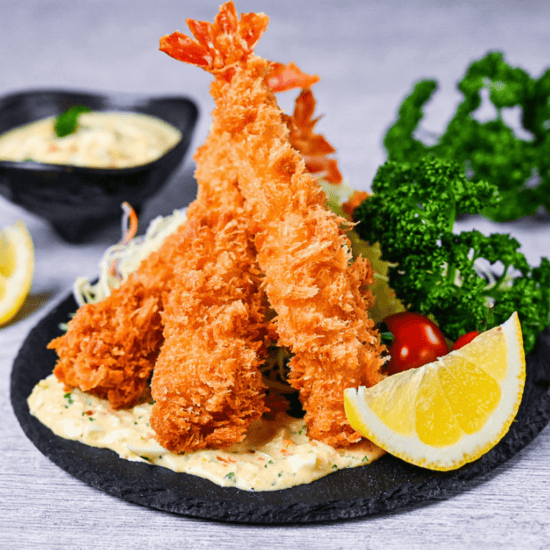



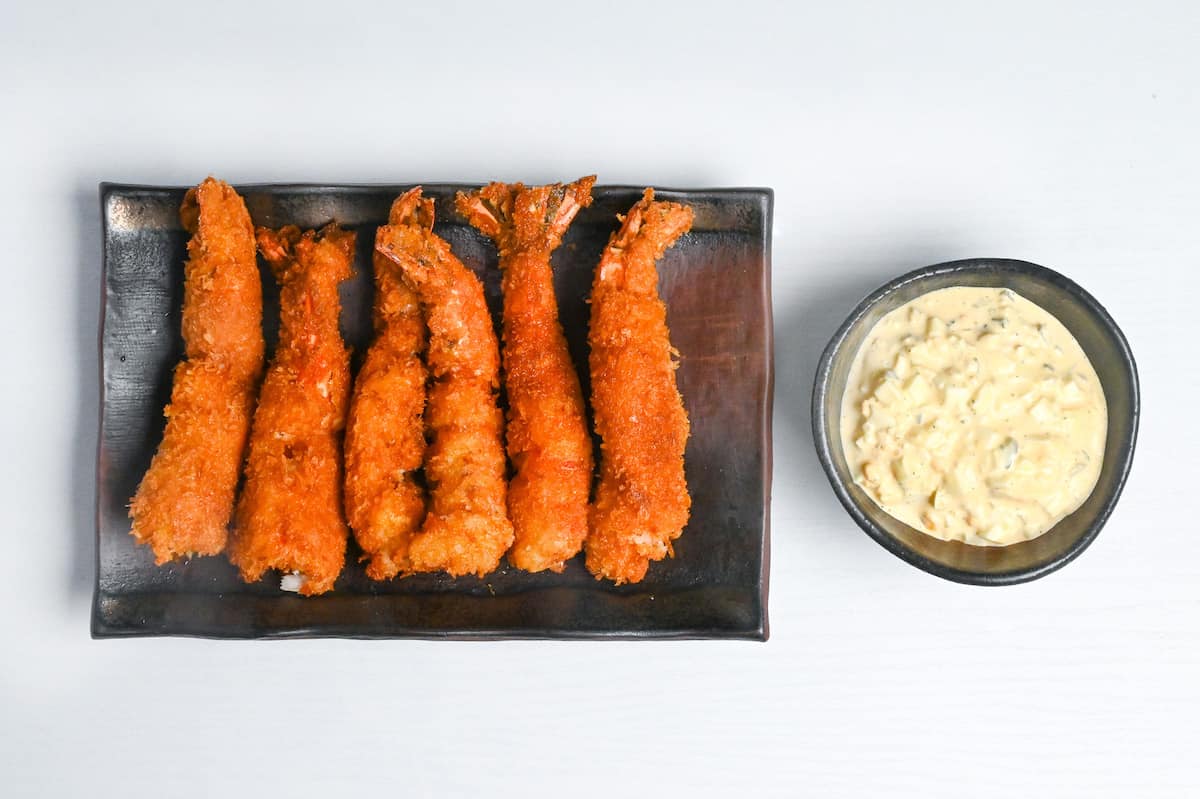
Cornstarch or Baking Soda for “cleaning” the shrimp?
Thank you for your comment! We only use corn starch and salt for cleaning the shrimp, no baking soda.